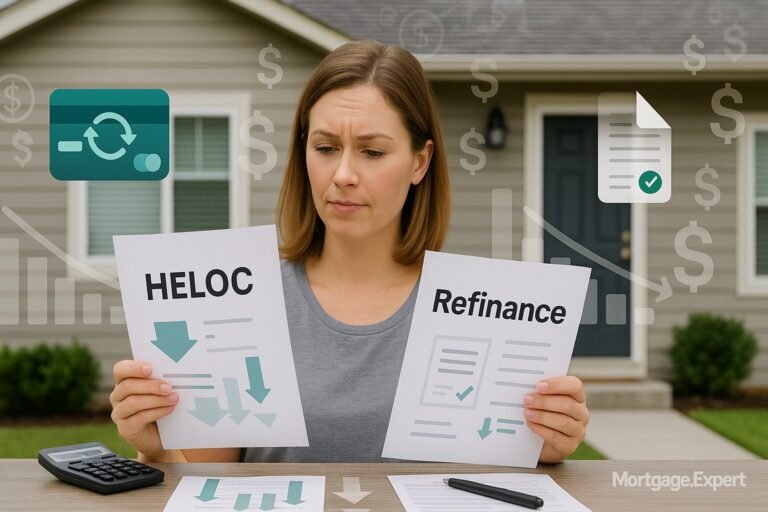
How to Choose a Mortgage Rate
Fixed or variable? Short-term or long-term? This guide breaks down how to choose the right mortgage rate in Canada based on your budget, goals, and market trends.
Choosing the right mortgage rate isn’t just about picking the lowest number you see online. It’s about understanding your finances, your long-term goals, and how different mortgage types and terms can impact your life. Whether you’re a first-time buyer or renewing your mortgage, this guide will help you confidently navigate your options.
Step 1: Estimate What You Can Afford
Before comparing rates, you need to understand how much home you can realistically afford. This process, known as mortgage affordability, is based on your income, expenses, debt, and how much you’ve saved for a down payment.
🏡 Use Our Mortgage Affordability Calculator
Want to know how much home you can afford? Our quick calculator gives you an instant estimate of your maximum purchase price — so you can budget smart and house-hunt with confidence.
🧮 Try the Affordability CalculatorStep 2: Know Your Down Payment Options
The size of your down payment affects everything from your monthly payment to whether or not you’ll need mortgage default insurance.
In Canada, the minimum down payment is:
- 5% for homes under $500,000
- 10% for the portion above $500,000 up to $999,999
- 20% for homes over $1 million
The more you can put down, the less you need to borrow—and the lower your long-term interest costs will be.
Step 3: Pick a Mortgage Term That Matches Your Plans
Do you plan to stay in your home long term? Are you comfortable with some interest rate risk? These answers will guide your choice between short-term, medium-term, or long-term mortgages.
Most Canadians choose a 5-year fixed rate, but that doesn’t mean it’s the right fit for you. If you expect to move soon or think rates may drop, a 1- or 3-year term might offer better flexibility.
Fixed Rate: Your rate stays the same throughout your term.
Variable Rate: Your rate fluctuates with your lender’s prime rate, but your monthly payments may remain fixed.
Step 4: Choose the Right Type of Mortgage
There are open and closed mortgages. Understanding the difference can save you thousands if you need to break your mortgage early or want to make extra payments.
- Open Mortgage: More flexibility, no penalties for early repayment, but higher interest rates.
- Closed Mortgage: Lower rates, limited prepayment options, penalties for breaking early.
Bonus Tip: Look for prepayment privileges that let you pay off more of your principal without fees. Common options include:
- Lump-sum payments
- Increasing your regular payment
- Accelerated bi-weekly payments
| 🔍 Feature | 🔓 Open Mortgage | 🔒 Closed Mortgage |
|---|---|---|
| 💸 Prepayment Flexibility | Unlimited prepayments allowed | Limited (usually 10–20% annually) |
| 📆 Term Length Options | Usually shorter (6 months to 1 year) | More variety (6 months to 10 years) |
| 💰 Interest Rate | Higher | Lower |
| 🔄 Switching or Breaking | No penalty | Penalty applies (IRDs or 3 months’ interest) |
| 🏠 Best For | Short-term, uncertain plans (e.g. selling soon) | Staying put with a fixed budget |
Step 5: Understand How Mortgage Rates Are Set
Lenders determine your mortgage rate based on several personal and market factors. These include:
- Credit score
- Loan amount
- Down payment size
- Debt-to-income ratio
- Mortgage type and term
Improving your credit score and saving a larger down payment are two of the most effective ways to qualify for lower rates.
Step 6: Shop the Market (Or Let Us Do It for You)
Don’t settle for the first offer you get. Every lender prices differently, and what works for one borrower may not be the best deal for you.
At nesto, we scan the market in seconds to bring you the lowest rate available—without the haggling. Our advisors aren’t paid on commission, so you get honest advice that’s in your best interest.
Final Thoughts: It’s About More Than Just the Rate
Yes, a low rate is important. But so is flexibility, fees, repayment terms, and your personal goals. Choosing a mortgage is one of the biggest financial decisions you’ll make—so it’s worth taking the time to get it right.
💬 Have Questions About Mortgage Rates?
Our licensed mortgage experts are here to guide you through rate options, approval strategies, and what works best for your financial goals.
💬 Talk to a Mortgage ExpertStuck with a Mortgage Decision?
Don’t stress — our team is here to help. Reach out for free, no-obligation guidance.
Contact the Experts



